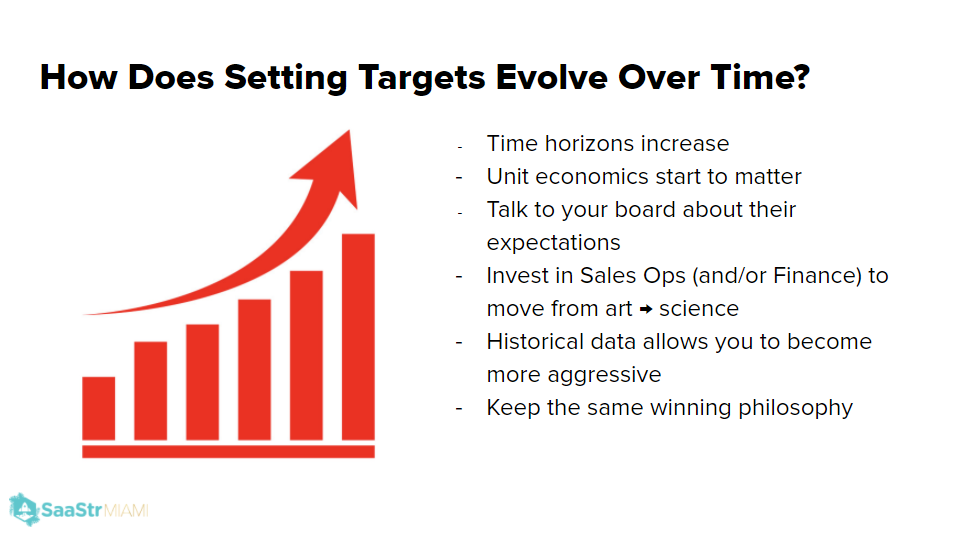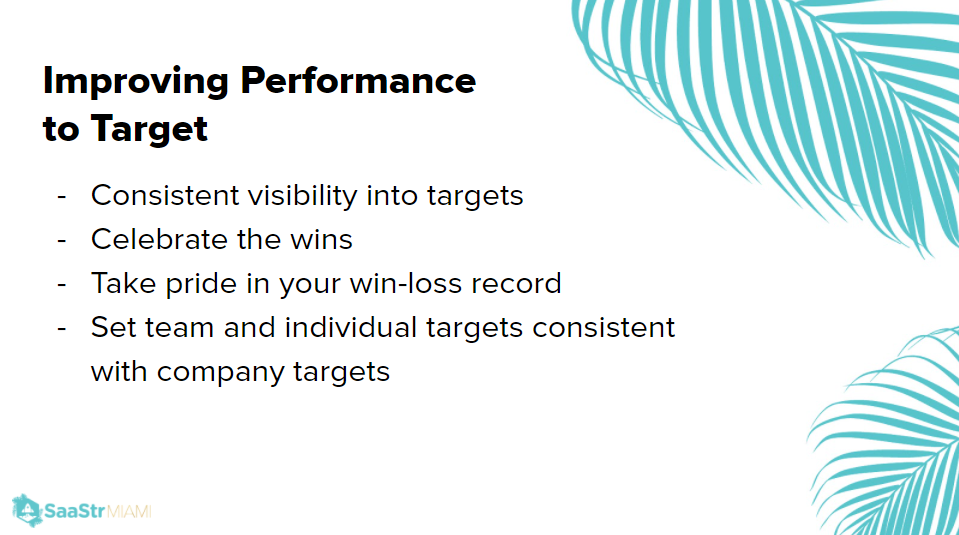Tracking business performance through revenue targets remains one of the most valuable ways to measure company success. Yet, it’s crucial to understand how to set the right goals for your sales teams to ensure optimal growth. Sam Blond, CRO at Brex, shares his insights into how to select suitable targets and ensure your team hits them.
The Two Variables and Your Target Game Plan
According to Blond, there are two main components to creating the perfect revenue goal: “There are two variables to hitting targets. The first one is where you set the target, and the second one is how you perform. It may seem obvious, but most people focus primarily –– almost exclusively –– on the latter.”
Performance may not matter if your goals are set too high for your teams to achieve realistically. Instead, Blond recommends a strategy that drives a more realistic pace and produces optimal outcomes.
When to Set Your First Target: At the early startup stage, founders are focused on acquiring the first customers, finding the right product-market fit, and getting their company off the ground. At this stage, you don’t need a revenue target quite yet. But once you have hired salespeople dedicated to revenue, it’s time to set your first targets.
Initially, you will want to set your targets at a monthly cadence. This is because you won’t have enough data to project more extended periods at this stage.
How to Set the Number: Blond’s advice is to be more conservative in your goal-setting. For example, if you’re confident that you will hit $10,000 ARR in a month, shoot for a surefire $8,000 target instead.
Blond elaborates on this point by saying, “So why not set more aggressive targets from day one? The biggest reason is that you want to create a culture of winning, and you want to set the tone for that culture of winning early.”
If you do happen to miss a target, don’t panic. Instead, simply adjust for next time, so your team has a more realistic and achievable goal.

Goal-Setting Evolves Over Time
As your business grows, your revenue targets should evolve alongside it. Here are some changes you’ll notice throughout the journey:
- Time Horizons Increase: Those monthly targets you set earlier begin to extend. Now you’ll start adding quarterly and yearly targets in addition to the monthlies.
- Unit Economics Start to Matter: You’ll begin to add in additional metrics like CAC and LTV to give the fullest picture of your targets and performance.
- Invest in Sales Ops and/or Finance: This is the time to move the art of sales to a repeatable, more measured science.
- Historical Data: More data allows you to be more aggressive in target setting.
To hit the targets you set, keep consistent visibility into your targets, celebrate the wins, and ensure that team, and individual targets align with company goals.
One thing should remain the same, however. Keep up the culture of winning and positivity, and that starts by setting attainable revenue targets. As Blond emphasizes, “If you set a target that is higher, you may think that is going to drive more behavior, and ultimately drive more performance from your team. But if you’re missing targets, it’s going to do the exact opposite.”
Your company will grow faster with a winning culture that takes pride in meeting its revenue goals and contributing to the business.

Key Takeaways:
- When it comes to revenue targets, where you set the target is as important as how you perform.
- It’s very difficult to turn a losing culture around.
- Your business will grow faster if you create a culture of winning.
- Ensure company targets are consistent with team and individual targets.

